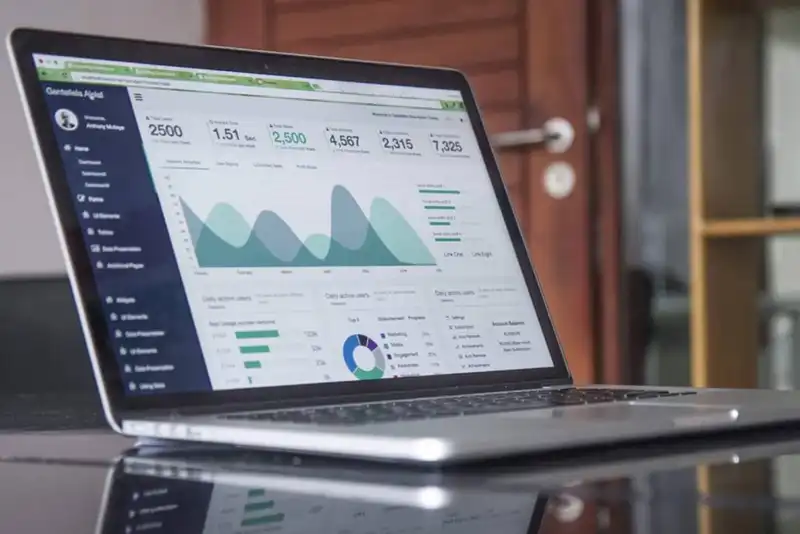What is a Business Analysis and Why is it Important in Today's Market?
Companies face a continually evolving set of challenges, such as new competitors, market changes, and new regulations. Those that can spot these issues early on and implement solutions are better placed to stay successful over the long term.
Owners and managers can do this by performing business analysis. This article will discuss some of the techniques people can use when assessing their company.
What a Business Analysis is & Why Use It
A business analysis ensures that a company is equipped to reach optimal potential. It helps those in charge find problems and then put in place strategies or processes to solve the issues. A good business analysis process will result in an actionable plan that the business can implement.
All companies can benefit from business analysis as organizations large and small always have areas in which they can improve. Companies that tackle their issues head-on are the most likely to be successful over the long term.
Business analysis typically works like this-
1. Those in charge define the company's goals and needs.
2. They then search for the roadblocks that are stopping them from reaching these targets.
3. The next step is coming up with ways to solve these problems.
4. The business implements the solutions.
The techniques used can help throughout a companythey are useful on an organizational level to guide overall strategy, as well as on a smaller scale to streamline individual processes.
Overview of Standard Business Analysis Techniques

There are many different business analysis techniques that help with a multitude of problems Business leaders should choose the correct technique for their situation. Here is an overview of standard business analysis methods.
SWOT Analysis
SWOT is a common technique that aims to give an overview of a business's internal and external strengths and weaknesses. SWOT is an acronym for-
- Strength The business's advantages and what it is good at
- Weakness The business's disadvantages and weak points
- Opportunities Areas where the business could grow
- Threats External factors that threaten the business
MOST Analysis
MOST is a form of analysis that helps businesses understand what they are trying to achieve and then define and put in place strategies to help. MOST stands for-
- Mission The business's overriding goal
- Objective The lower-level objectives that will help the business achieve its mission
- Strategy The overall plan for how a business will achieve its objectives and mission
- Tactics Actions businesses take to implement the strategy
MoSCoW Prioritization
MoSCoW prioritization is a form of business analysis that helps companies define what to focus their resources on. MoSCoW stands for-
- Must-haves- Things that are non-negotiable. Businesses must direct resources towards these problems
- Should haves- These are not as important as must-haves, but still add significant value
- Could haves- These have a positive impact, but they are not vital to the success of a business or project
- Will not (or wish to) haves- These are not currently important. If everything else gets done, the business can direct resources towards these problems
PEST (PESTLE) Analysis
PEST (or PESTLE) analysis is used to help businesses assess external factors that could affect their ability to operate successfully. PEST(LE) stands for-
- Political Minimum wage, tariffs, industry regulations, tax, etc.
- Economic Growth rate, recessions, inflation, interest rates, etc.
- Social Changing social attitudes towards your product or industry
- Technological Advancements that could affect your business
- Legal New regulations or changes to the legal environment
- Environmental Regulations relating to contamination, waste, pollution, recycling, etc.
PEST can be used alongside the Threats and Opportunities section of a SWOT analysis.

Cost-Benefit Analysis
Cost-benefit analysis is a technique that helps a business make the most impactful decisions by measuring the potential financial costs and opportunities of the decision. The company can then decide whether the project is worth pursuing.
Imagine a restaurant that wants to increase its revenue. It could choose from expanding its current location, moving into a new property with a larger capacity, or opening a second location. Each of these decisions will have varying costs and benefits that the owners must understand to make an informed decision.
Fishbone Diagram
Companies can use a fishbone diagram to help discover the reasons for problems in the business. The diagram gets its name because it looks like a fish skeleton, with the problem at the head of the chart, and the reasons making up the spine of the fish.
The problems are typically grouped into major categories or root causes. Businesses can either start with root causes or identify problems and then work backward to identify common causes.
The major benefit of fishbone diagrams is that identifying the reasons for problems allows managers to take necessary steps toward a solution.
Five Whys Approach
Five Whys is a problem-solving technique that aims to find the root cause of an issue. It is a simple method that involves starting with the problem and asking why? until those performing the analysis discover the main issue. They can then suggest solutions to the problem.
While the technique is called Five Whys, you may reach the root cause after asking the question more or less time than this.
Here is an example of Five Whys in action.
Problem- A restaurant keeps running out of an essential ingredient, leaving it unable to fulfill orders.
1. Why do we keep running out of the ingredient? We don't order enough of it.
2. Why do we not order enough? We don't know how much we will need.
3. Why do we not have a way to estimate demand accurately? We don't track sales.
4. Why don't we track sales? We don't have a system in place to do so.
5. Why don't we have a system in place? We didn't have time to implement one.
Solution- Direct resources towards implementing better processes to track sales and estimate demand.
The method works because instead of putting in place solutions that solve the superficial problem, managers can solve the root of the issue.
In the example above, if the business stopped after the first Why, it would simply order more of the ingredient. This wouldn't solve the issue of the restaurant not having an effective process in place to estimate demand and the problem would keep arising.
CATWOE Analysis
CATWOE analysis helps businesses consider all parties related to a problem. It ensures that any solution considers the perspectives of all involved. CATWOE stands for-
- Customers- Who are the organization's customers and how will the change affect them.
- Actors- The group that implements the changes. This is typically employees.
- Transformation- These are the systems or processes that will be affected by the change.
- Worldview- Look at the wider implications of the problem and the solution.
- Owners- These are the people with the power to implement the solution.
- Environment- Are there any outside factors that may limit the solution. For example, regulations or your budget.
The Goal of Business Analysis

The goal of business analysis is to help businesses discover problems and then come up with solutions to these issues.
The specific places business analysis helps will depend on the exact needs of the organization in question. That is why it is essential to do a needs assessment before getting started. Business analysis will often focus on the following three goals.
1. Reduce Waste Resources
All businesses have access to resources. These typically fall into the categories of physical resources, human resources, intellectual resources, and financial resources. Businesses that can efficiently use resources can do more without increasing spending.
2. Improve Project Efficiency
Ensuring tasks are performed optimally can help businesses streamline operations. Think about the difference between a restaurant that uses software to process reservations, rather than simply writing bookings down in a notepad and hoping someone sees it during the next shift.
Business analysis can help companies by spotting processes that are not working as they should. Those in charge can then come up with more efficient ways of working.
3. Increase Revenue
A more efficient process and better use of resources can lead to higher output which can ultimately bring in more revenue than before the changes. If the business can combine this with a reduction of costs, it may also become more profitable.
The Role of Technology in Business Analysis
The Harvard Business Review highlights several ways that household name companies such as Jaguar Land Rover, SABMiller, and Nike are using data to drive business analysis.
The article explains how the businesses put in place infrastructure that gives people throughout the organization access to data. By ensuring the tools were easy to use, employees were able to make data-driven decisions without needing strong technical know-how.
While these are all huge organizations, technology has made it easier than ever for smaller businesses to access the information they need to improve their practices.
SMEs can use affordable reporting tools to automate data collection and display this in a way that makes receiving insight easy. This means anyone can use the information to make smarter, data-backed business decisions.
As an example of how this could work in practice, imagine a company that is struggling with the amount it spends on labor. A reporting tool that consolidates information relating to hours worked would highlight problem areas where the business is spending more than necessary.
Using this information, the company could introduce better scheduling processes that ensure shifts aren't overstaffed, thus reducing expenses.









